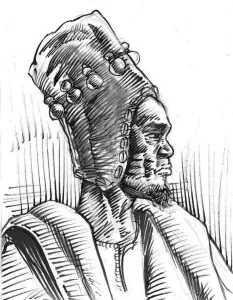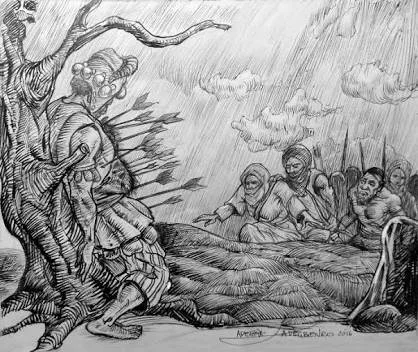There are some people whose legacies are passed from one generation to another, whether as a result of their good deeds or their bad influence. The former is remembered when bad things happen and they wished those people could stay longer, while the latter is remembered when people wished they never existed- maybe their bad influence was the foundation of the society’s problems.
Historians refer to people that were trail blazers many centuries ago as ‘’Heroes.” This is because their stories cannot be forgotten for their labor and sacrifice to sustain the pride of their communities and fight for the freedom of the afflicted.
These heroes vary in different tribes, and Nigeria as a conglomeration of many ethnic groups has stories that can be reckoned with and are passed on to generations- their stories are either used as tales or as disciplinary measures in the society.
The Yoruba empire has one such story. People like Oduduwa, Orunmila, Oba Oranyan, Oba Ajaka, Obafemi Awolowo, and Bashorun Ogunmola, among others, are seen as role models and their values have become guiding principles to sustain our cultural beliefs.

The Structure of the Old Oyo Empire
In the early 17th century (1300-1535), what determined the good and bad leaders in the Oyo Empire were the people. In those years, people might not have had the power to dismiss their rulers but they are confident to decide whose legacy should be sustained.
In the Oyo Empire, the supreme head is the Alaafin (King) often referred to as the owner of the palace in the Yoruba language, while the body of decision makers and advisers (governing body) is called the ‘Oyo Mesi, which comprised of the 7 hereditary kingmakers’ The decision makers of the governing body were headed by the Prime Minister called “Basorun”, whose duty was to delegate activities that helped to maintain the balance of power. Basorun had the power to behead the king by sending a message the Yoruba call ‘Aroko’- aroko is a message sent to someone using objects or signs without necessarily having to speak to the person. Bashorun, when instructing the King to kill himself, sends a calabash of parrot’s eggs.

What You Should Know About Bashorun Gaa
One of the prominent Bashorun in the Oyo Empire whose name cannot be forgotten was ‘’Bashorun Gaa.’’ He became the Prime Minister when the then Alaafin of Oyo, Oba Labisi was crowned. Labisi appointed Basorun Gaa in 1730 as the head of the Oyo Mesi. During his tenure, he was known for his brevity and he became the most feared Baorun in history. According to the research gathered by Naijabiography, Bashorun Gaa was a powerful man with charms and supernatural powers who people feared in Oyo Ile. History also has it that his charm could make him turn into any animal, that he became more authoritative than the Alaafin.
Earlier before the reign of Oba Labisi, Bashorun Gaa between 1732 and 1750 was in the military as the leader in the old Oyo empire during the reigns of Alaafin Gberu, Amuniwaye, and Oba Onisile, whose records of success were second to none.
Why Bashorun Gaa was Killed
After the demise of Alaafin Onisile, who died due to his excessive display of power, brevity, and rashness- history has it that he was killed by thunder lightning. Bashorun Gaa became the prime minister and became a tyrant. One of the prominent incidents that led to their hatred for him was when he killed Oba Labisi’s friends because he could not become the king.
In his 24 years as the Prime Minister of the Oyo Mesi (1750-1774), Bashorun Gaa has spearheaded the dethronement and death of prominent Alaafin such as Labisi, Awonbioju, Agboluaje, Majiogbe, and Abiodun. This tyranny displayed by Bashorun made people fear him more and to date, he is been referred to as the most powerful Bashorun in the history of the Oyo empire.

Who killed Bashorun Gaa?
The Aare Ona-Kankanfo, known as the head of the imperial army visited Bashorun Gaa at his residence with his troops to put an end to his supernatural powers and his tyranny. Aare Ona-Kankanfo knew the secret to Bashorun Gaa’s supernatural powers, which gave him the confidence to kill him.
Aare Ona-Kankanfo in 1774 murdered the wives and children of Bashorun Gaa, after which he dragged him to a popular market in Oyo Ile called ‘Oja Akesan (Akesan Market).’ He was later tied to the pole close to the king’s palace where he ordered the people to cut a pound of
flesh each from Gaa’s body. The flesh was burnt- history has it that he died a slow death.
According to research, the death of Basorun Gaa led to the inactiveness of the Oyo Mesi which at the time served as checks and balances of the Oyo empire.





